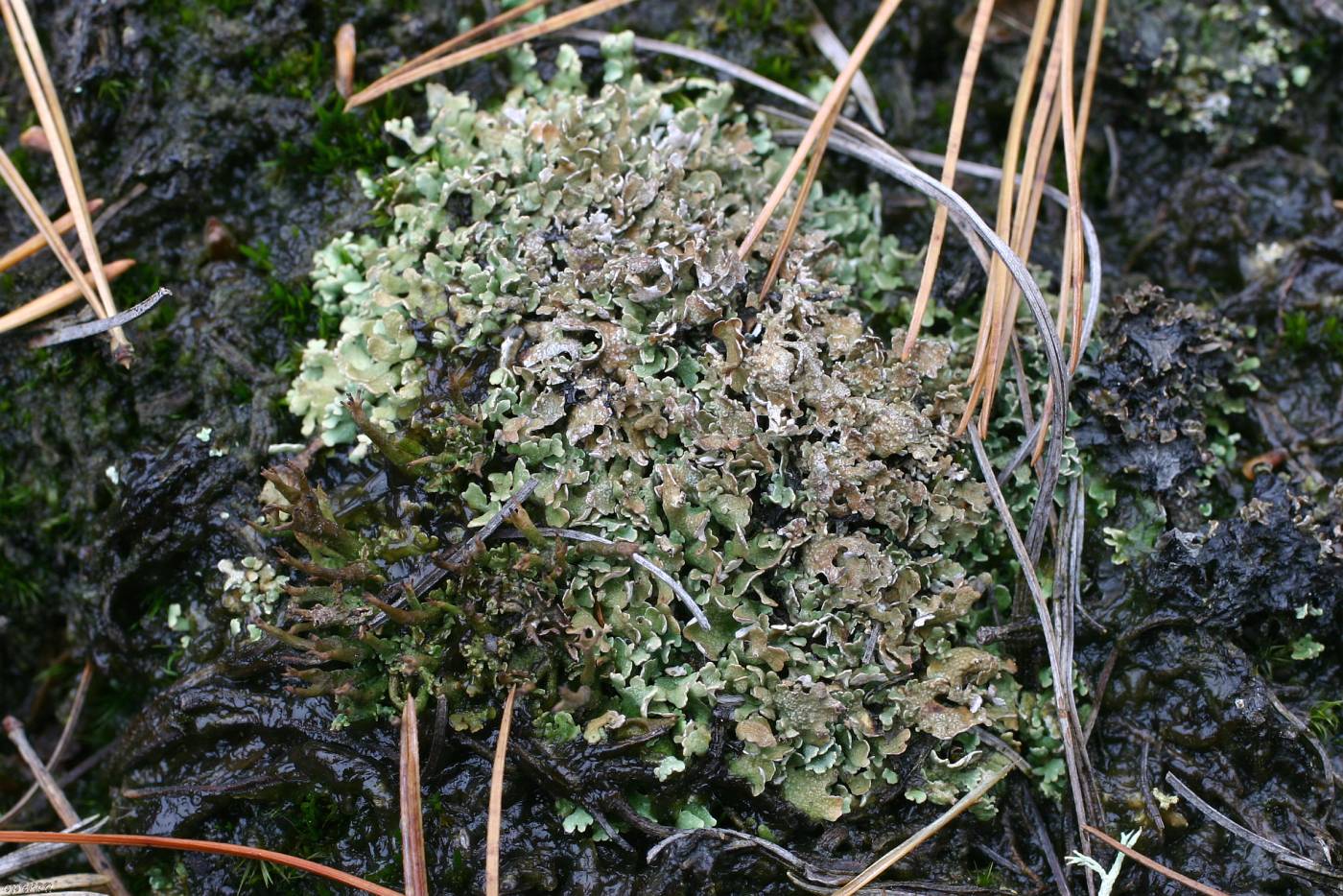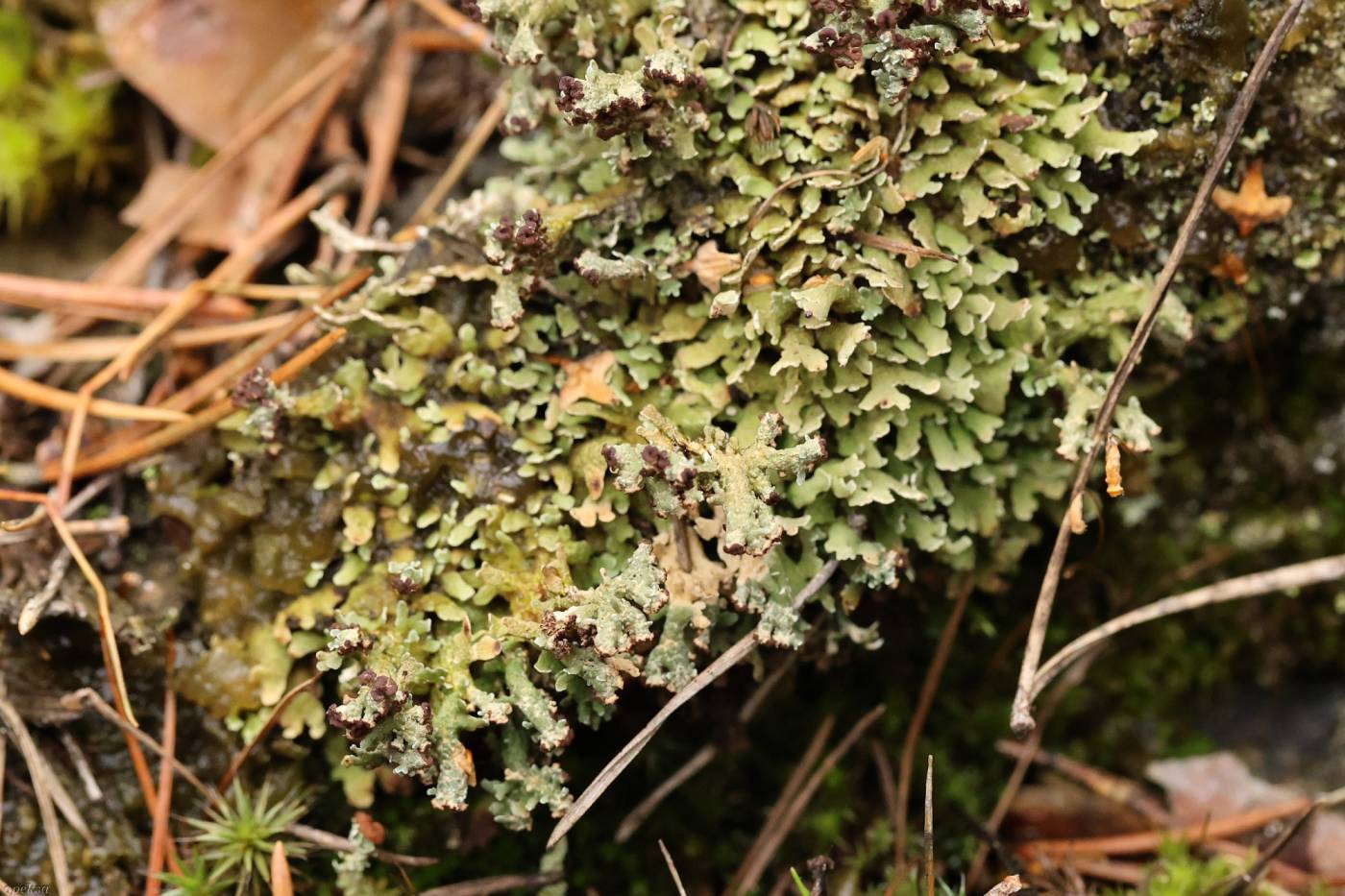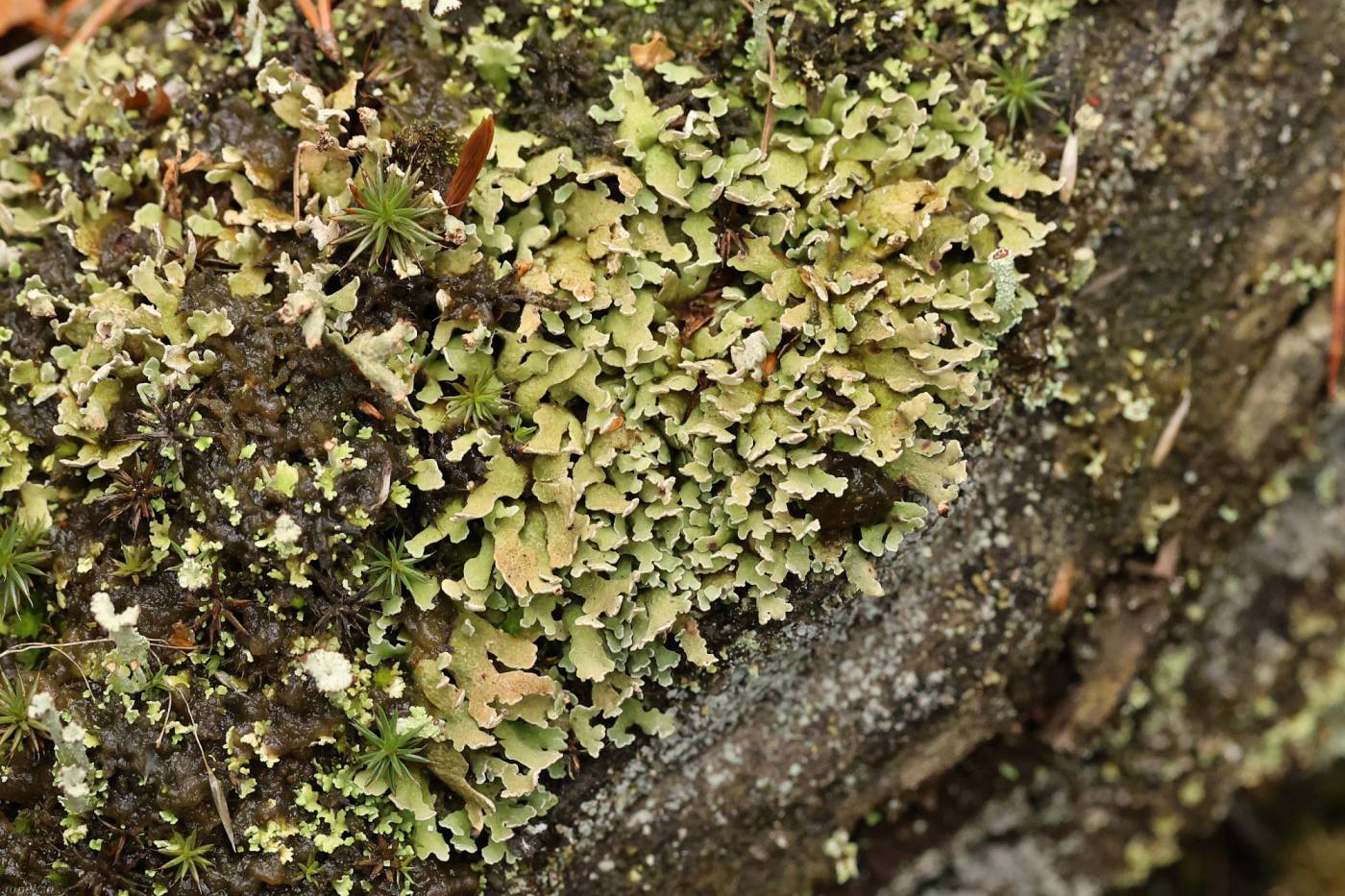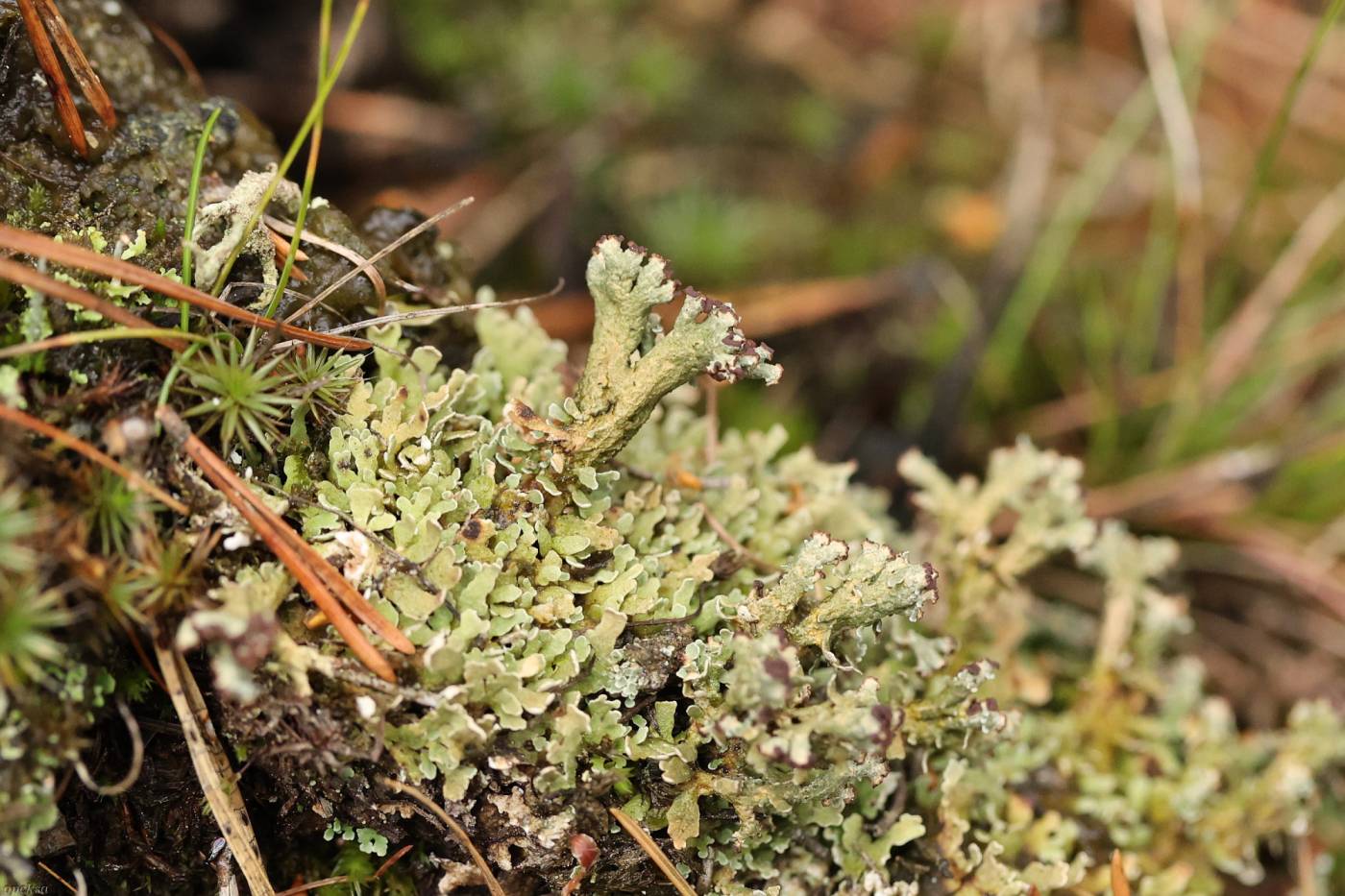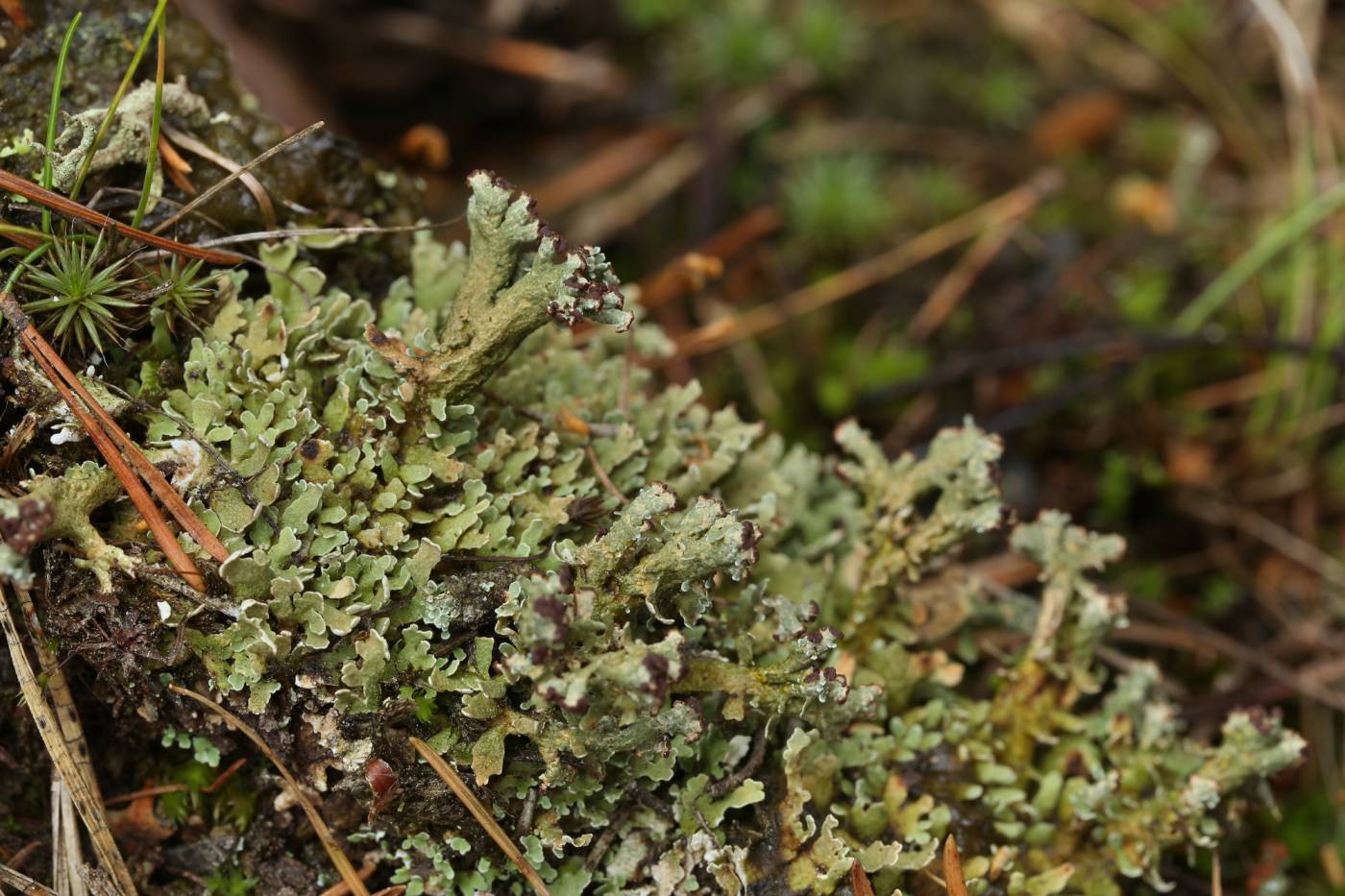Cladonia strepsilis is characterized by large and densely packed primary squamules, which often have ochraceous- or yellowish-brown tinge when dry. It is the only lichen in the Czech Republic with coppery green C+ reaction due to the content of strepsilin. Podetia are rarely formed. They are short and corticate, usually with terminal apothecia. Pycnidia are common, formed directly on the squamules. Small specimens without podetia or pycnidia are easily overlooked or confused with squamules of other Cladonia species.
The lichen grows on acidic nutrient-poor soil with low competition from vascular plants, including disturbed places, from lowlands to mountains. As noted by Suza (1946), it typically occurs on heathlands, often together with Dibaeis baeomyces, Pycnothelia papillaria and Stereocaulon condensatum. It can also be found on sandbanks, rocky steppes and in open pine forests. C. strepsilis has a suboceanic distribution range. Accordingly, most of the Czech localities lie in western Bohemia, where it is scattered over the areas with sandy soil and in river valleys. It probably used to be more common in the past but declined due to the eutrophication, elimination of suitable stands and changes in the landscape use.
Literature: Suza J. (1946): K lichenologickému rázu středoevropských vřesovin, především xerothermních obvodů. – Věstník Královské české společnosti nauk 1944/18: 1–35.
taxonomic classification:Ascomycota → Lecanoromycetes → Lecanorales → Cladoniaceae → Cladonia
Red List (Liška & Palice 2010):VU – vulnerable
Red List (Malíček 2023):C3 – endangered
Occurrence in the Czech Republic
All records: 91, confirmed 82. One click on a selected square displays particular record(s), including their source(s).

